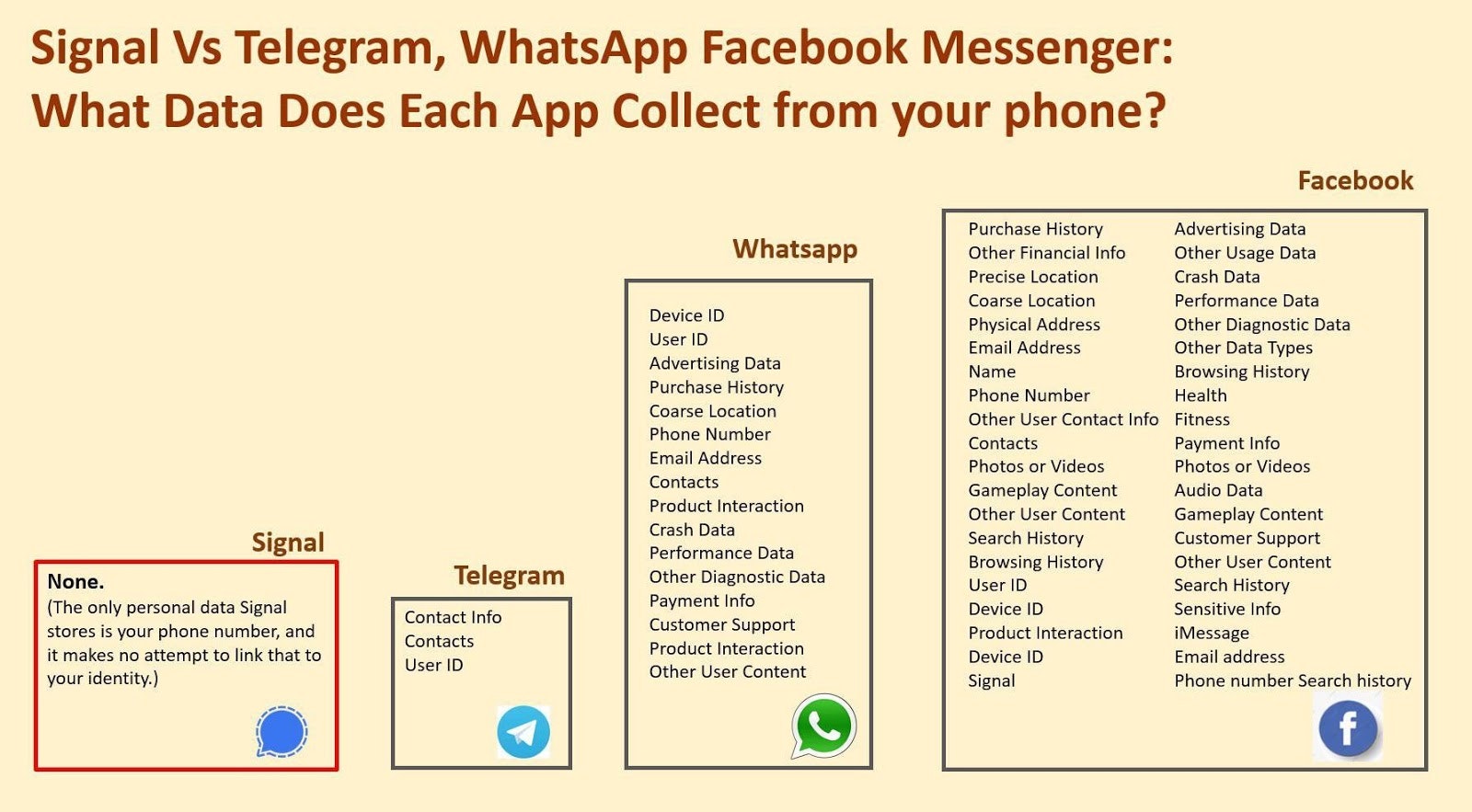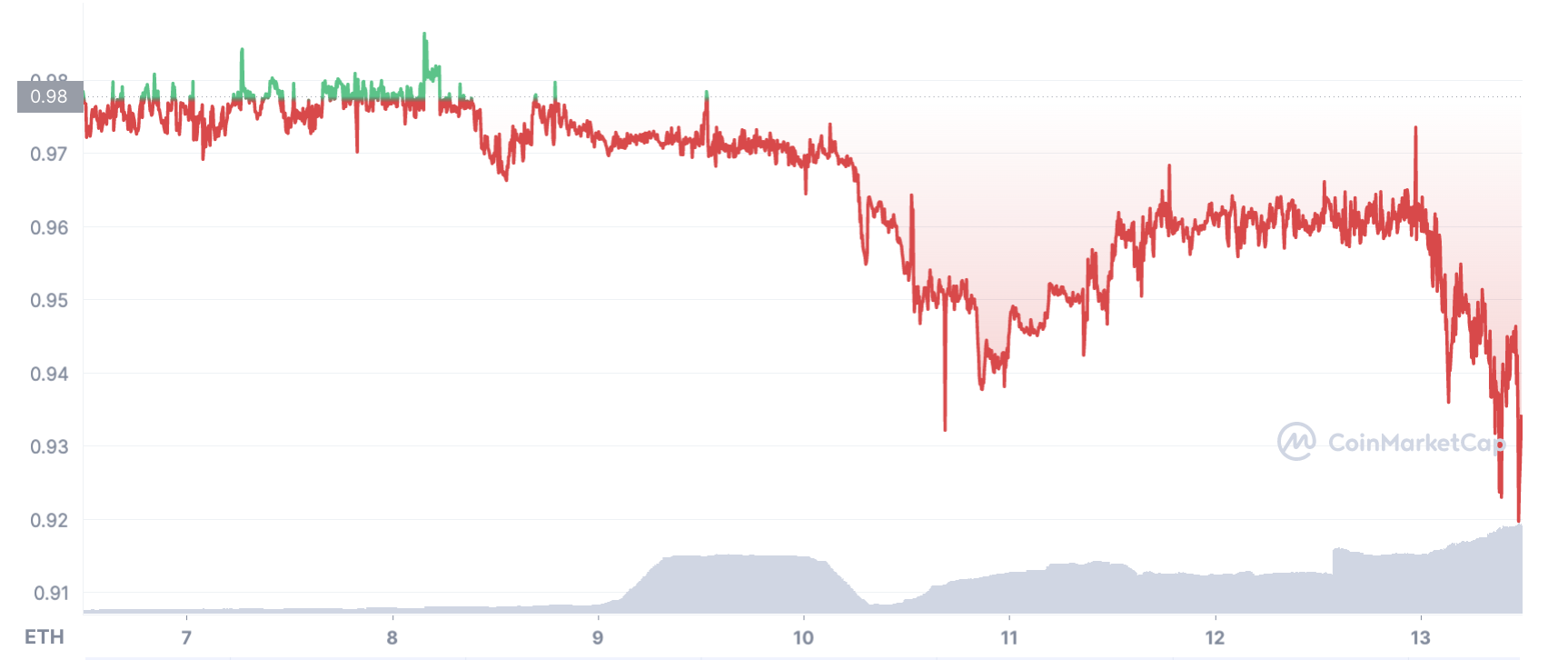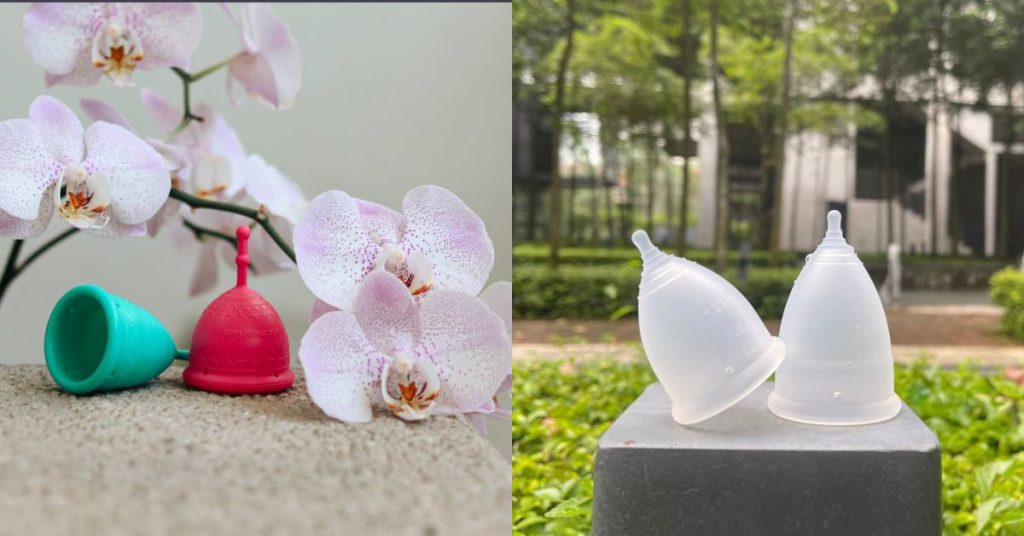Telegram has announced a paid subscription plan: who’s affected, and should you be concerned?

Last Friday (June 10), Telegram announced that it would launch a paid subscription plan for users later this month. The paid subscription plan would allow users to have a higher limit for chats, media, and file uploads.
The messaging app has more than half a billion monthly active users, and counts Meta’s WhatsApp as a competitor.
The paid subscription plan would allow users to have a higher limit for chats, media, and file uploads, according to CEO Pavel Durov.
“Many have been asking us to raise the current limits (on chats, media, and file uploads), so we looked into ways to let you go beyond what is already crazy. The problem here is that if we were to remove all limits for everyone, our server and traffic costs would have become unmanageable, so the party would be unfortunately over for everyone,” said Telegram CEO Pavel Durov.
After some consideration, the paid subscription plans were the only way to let users get more features, while keeping the existing ones still free, he added.
The subscription plans are entirely optional and allow users to support Telegram. However, existing features will remain free and Durov has also promised that “plenty of new free features” are coming.
Telegram has previously launched sponsored messages as a form of advertising. These messages are displayed in large public one-to-many channels, and no user data is mined or analysed to display ads.
That being said, Durov has defended the move with an appeal to his vision for the application to remain focused on its users.
“While our experiments with privacy-focused ads in public one-to-many channels have been more successful than expected, I believe that Telegram should be funded primarily by its users, not advertisers. This way our users will always remain our main priority,” he said.
End of an era? Not really.
Understandably, the announcement has caused quite the commotion. Many of us in Singapore use Telegram, and not just for chatting with friends — the application hosts business accounts, news broadcasts and more.
The announcement of Telegram Premium and its subscription plans are likely to affect some users, but is it going to be significant? Probably not.

For one, there is already no limit on the number of messages individuals can send to each other. However, limits still exist in terms of file sizes and how many groups a single user can create in a single day.
Currently, the file size limit is 2GB, which is sufficient to send a high-quality video that’s about half an hour in length.
The number of participants in broadcast groups like Vulcan Post’s is unlimited, and channels also allow an unlimited number of subscribers.
With these limits, the question should not be how much we would be limited by Telegram Premium’s subscription fees. Instead, it should be focused on who would require exceeding these limits on a regular basis.
Of course, if Durov suggests that there are, as consumers we are not really in a position to cast doubt on his statement.
And for those of us who are currently using the Telegram for free, Durov has already promised that there will not be any interruption of service. Effectively, those who have been using Telegram without exceeding its limits will have nothing to worry about and more to look forward to, since Durov has also promised that some premium features will also be released for free.
No free lunch in the world
As consumers, we should also understand that there is no free lunch in the world. Everything comes at a cost and when something is marketed to us as free, we should also question if we are indeed the consumer or the product.
The most prominent alternative to Telegram is WhatsApp, owned by social media giant Meta. Meta’s network includes Instagram and Facebook, among others.
While WhatsApp and Facebook are free for users, Meta as well as Telegram, are ultimately still companies and a base requirement for companies is to cover their operating costs.
An estimated 15 billion Telegrams were being delivered daily in 2016. Meanwhile, WhatsApp delivers around 100 billion messages daily.
These messages require servers, and these servers cost money. In addition, app developers also have to contend with customer complaints, product development, and much more.
Can we really expect these companies to provide these services completely free of charge?
Therefore, is it really unreasonable to expect that monetisation is a concern for these service providers, especially as they continue to work on the application itself?
Of course, one may argue that WhatsApp is, as of now, free to use. Users are not charged a fee for downloading WhatsApp, and there is no limit as to how much one uses the application.
But we should also consider that WhatsApp is part of Meta’s ecosystem, and this is not an ecosystem that prioritises our privacy.
Facebook tracks our every move on their host of sites, from who we interact with, to what we read and watch. And WhatsApp, as part of the ecosystem, has also been dragged onboard the system. This data is then sold to companies, who in turn post targeted advertisements on Facebook.

So when we say that WhatsApp is free, the cost is instead paid using our data. WhatsApp collects data about our purchase history, payment information and advertising data, while Telegram does none of the above.
And lest we forget, before Meta’s acquisition of WhatsApp, WhatsApp also cost money to use on a similar subscription model — except that this was for almost all users rather than for those who used the application most.
So at the end of the day, it seems that Telegram is still giving us quite the bargain when it comes to choosing a messaging platform. Our data is still protected with Telegram, and only those that use the platform far more than regular users will be paying for premium features.
This is likely the fairest scenario for most of us — those that use the most, contribute the most, and those who use the least, remain unaffected. And while there is no free lunch in the world, those that consume the most, at least in Telegram’s paradigm, should also pay the most.
Featured Image Credit: South China Morning Post
Also Read: Not the first or last: Why crypto lender Celsius is crashing and what can we learn from it?
Not the first or last: Why crypto lender Celsius is crashing and what can we learn from it?

Last Sunday (June 12), Celsius Network temporarily paused all withdrawals from its platform. The team cited extreme market conditions as a reason for the move, but this itself triggered selloffs of cryptocurrency assets across the board.
When Celsius first started operating, they were adamant that they offered a better deal for people than the banks. Slogans like “unbank yourself” and “banking is broken” were commonplace.
With this recent announcement, the irony is almost impossible to ignore.
So what happened with Celsius?
First of all, we should understand Celsius’ business model. It is a platform that functions much like a bank for cryptocurrency assets — users can deposit their cryptocurrency assets on the platform, and earn interest on these deposits.
And in the cryptocurrency world, interest rates are notoriously high. Celsius promised more than 18 per cent interest per annum, and protocols like Anchor actually offered higher interest rates at around 20 per cent.
For comparison, depositing funds in traditional banks like DBS offer around 0.4 to 1.6 per cent interest per annum, while a 10-year government bond in Singapore yields around three per cent interest.
With these funds, banks make investments, paying the interest and pocketing the difference as a profit.
Celsius apparently does something similar, further depositing users’ assets on higher interest protocols, and earning the difference as profit.
Given that Anchor offered a higher interest rate than Celsius, it made sense for Celsius to deposit assets on the Anchor protocol, which is what they allegedly did. This meant that some of their assets also became caught up in the UST crash that occurred last month.
On top of this, Celsius also offered some of the highest interest rates in the market for Ethereum, one of the largest cryptocurrencies in the world. Yet, Celsius was not backing these loans with their own Ethereum. Instead, they were relying on a derivative of Ethereum, known as staked Ethereum.
This derivative, called stEth, represented Ethereum coins that were locked up by validators of the Ethereum blockchain as part of their proof-of-stake consensus protocol.
Celsius was using stEth to repay creditors when withdrawals were requested, but while stEth often traded at a 1:1 ratio with Ethereum, stEth cannot be redeemed directly for Etherum. This meant that when stEth began trading below the ratio, the panic started.

Since Celsius did not have sufficient funds, they effectively had to stop withdrawals since not all withdrawal requests could be honoured, and the requests would have likely resulted in the demise of the entire Celsius platform.
Deja vu?
If this sequence of events sounds familiar, you might very well be right. What essentially happened was that a bank was listing unrealised revenue as profits, and marketing them as foolproof.
In the leadup to the 2008 housing crisis, banks like Lehman Brothers and Morgan Stanley were doing much the same — with mortgage-backed securities and derivatives of those securities known as collateralised debt obligations.

Clearly, Celsius founders are not students of history.
But Celsius is likely more culpable than those banks for this current crisis — it was effectively trying to make money out of a form of economic arbitrage.
Banks like Lehman Brothers and Morgan Stanley may have been unethical in failing to do their due diligence when lending to property buyers, but there was at least some real value in the mortgage-backed securities that these banks sold, which was the value of the properties themselves.
In contrast, what fuels the yields on crypto lending platforms like Celsius, aside from the differences in interest rates that platforms are offering?
Revamping crypto lending
Celsius will likely not be the last protocol to face this outcome. The crypto space lacks institutions like central banks and governance institutions that are able to effectively protect lenders and consumers alike.
This is a gross oversight, meaning that crypto lending platforms like Celsius wield almost unlimited power when it comes to the management of their creditors’ funds and their debtor’s terms. In fact, Celsius has already shown what this power allows them to do.
On Monday (June 13), Celsius presented their debtors with a choice: top up their collateral, or be liquidated.
There is no institution that is capable of telling Celsius that this is, on many levels, inhumane and irresponsible. The reason that Celsius is effectively insolvent is not because debtors have taken out more than they have put in; instead, it is the bad bets that Celsius has made in its attempt to make money off market inefficiency.
In banking terms, what Celsius is doing might be akin to predatory lending.
What the crypto space increasingly needs is some form of regulation, as contrary to the ethos of the crypto community as it might seem. In its current state, the crypto space is an anarchists’ heaven, especially in the crypto lending space.

But what can be done to protect these future debtors and creditors?
For one, it might be prudent for everyone to understand that reinventing the wheel does not actually constitute innovation. Celsius, and many platforms like it, are the crypto equivalent of banks, with all of the risk and not much of the oversight.
One type of institution which has not migrated to the blockchain ecosystem is rating agencies. These institutions serve to independently analyse the banks, business models, and the like, and provide professional opinions on how safe certain securities and loans are.
Such a system put in place in the crypto ecosystem might serve as a source of stability to some extent — they can call out extremely risky projects such as Celsius’ arbitrage, and encourage genuine innovation.
Another innovation that the crypto world might benefit from would be akin to a central bank. These banks function as lenders of last resort, and provide loans to banks during times of crisis when banks simply do not have the liquidity to cover withdrawals.
Of course, some caveats must be made here — central banks do not unconditionally provide loans. Their loans often have conditions attached that ensure the same practices that drove a bank to insolvency are not allowed to be recreated. In short, platforms such as Celsius will not be able to receive loans since they simply relied on arbitrage.
The crypto world, as of late, has been facing increasing scrutiny — primarily for its volatility, but also for its governance. And this, I argue, is the primary flaw of the crypto ecosystem.
Without laws and protections, the individual is vulnerable, and is often taken advantage of by larger entities like Celsius. Unless these issues can be resolved, anyone in the crypto world must constantly be on guard.
When the philosopher Thomas Hobbes wrote that without security, life would be solitary, poor, nasty, brutish, and short, he was referring to man in the state of nature without governance and protection.
And while in the crypto world, our lives may not be at stake, our livelihoods sometimes are. Today, the crypto world is not particularly unlike Hobbes’ state of nature. And to ascend beyond that, as contrary to the ethos of the crypto world as it would be, governance may soon become necessary.
Featured Image Credit: Financial News London
Also Read: MAS’ crypto regulation pays off as Binance selects a S’pore startup to handle global payments
Grab buys and relaunches S’pore food portal HungryGoWhere, which ceased operations in 2021

HungryGoWhere, a website portal that offers food reviews, exclusive deals and food reservations, has made a comeback after a year of closure.
It was established in 2006 and later acquired by Singtel in 2012. After 15 years of operation, it announced its closure in June 2021 and its last day of service was on 11 July 2021.
However, Grab Singapore, one of Southeast Asia’s leading tech giants, announced today (June 15) that it has bought and relaunched the HungryGoWhere portal and its social media channels. The sum of the buy was not disclosed.
What’s new about HungryGoWhere?
Following the buy, HungryGoWhere will retain its name and iconic red hue.
With the rebranding of HungryGoWhere, consumers can expect a more integrated platform that offers not just exclusive food discoveries and latest information on F&B news and developments, but also a more socialised platform where they can learn more about the origins of popular food.
Exploring the behind-the-scenes of Singapore’s food scene, these insider information and sharings aim to add a personal touch to the food we eat.

F&B businesses can now access HungryGoWhere to reach their customers and share stories closer to the heart via the newly-launched interview series “20 Questions With” and “From Scratch”, where consumers can dive deeper into the origins of popular foods and the stories behind the people of the F&B sector.
In order to provide better curated content for consumers to find what they’re looking for, HungryGoWhere will tap on Grab’s rich superapp insights such as popular foods, consumer preferences, and frequently visited food stores.
To help featured brands gain as much visibility as possible, relevant stories on HungryGoWhere will also be shared with Grab’s wide base of users via the Grab app and its marketing channels.
“HungryGoWhere is a brand that many Singaporeans have grown to love since its inception more than a decade ago and many were sad to see it go. We feel privileged and excited to be bringing back its longstanding legacy, while aiming to take it to the next level with this rebrand,” said Cifer Ong, Managing Director, Strategy & Partnerships, Grab Singapore.
“Eventually, we want to establish Grab and our associated brands as the go-to source for diners seeking the best food recommendations and F&B brands looking to grow their business. We believe that our deep relationships with merchants and key learnings from the food sector, coupled with our extensive superapp insights, will help us achieve this.”
Featured Image Credit: HungryGoWhere
Also Read: Chye Seng Huat Hardware founder’s coffee tech firm raises US$5M funding in Series A round
Her fix for insomnia was satin silk PJs suited for M’sian weather, now it’s her side hustle

I’d consider myself a good sleeper, as I’ve never had to worry about positioning myself in a certain way on my bed, or forcing myself to sleep early in order to reach dreamland.
But I know of friends and even colleagues who really struggle with sleep. Most of them suffer from insomnia, while some just cannot fall asleep until a certain time. Or, until they’re in a certain position in bed.
If you look up remedies for better sleep, you’d find all sorts of advice ranging from changing your pre-bedtime routine (no screens an hour before bed), ingesting a specific drink (tea or warm milk), or even swapping out your cotton bedsheets for silk ones.
For Khor Hui Shen, 26, she believes that the type of nightwear worn plays an important role in ensuring one has a good night’s sleep.
From financial services to sleep
Previously, Shen struggled with insomnia and sensitive skin. Subtle rays of light coming in through the window or just the occurrence of a slight noise would wake her up.
“However, the one thing I realised that affects my sleep the most is the quality of my pyjamas,” said Shen.
Having graduated from the University of Warwick with a Degree in Economics, Shen continued to work in London, UK for 2.5 years as a Financial Services Consultant.
Soon after, she decided to come back to Malaysia in early 2021 to pursue something entirely different from what she knew: ecommerce.
She started off at a fashion ecommerce company as a Senior Account Manager and worked her way up to start and lead the new Marketplace Projects Team, a full-time job she still holds today.
During her time in the UK, Shen had been on a pyjama scouting spree, but it wasn’t easy to find one that was comfortable and pretty at the same time.

“Even if there are, they probably don’t suit the Asian body size/style. Upon returning to Malaysia, I noticed the same issue as well, which is not knowing where to obtain good quality pyjamas,” explained Shen.
Hence, the conception of nightystories. Founded in April 2022, the brand believes in offering pyjamas that are comfortable, stylish, and at affordable pricing.
Bridging the gap
Shen admitted that having a background in economics and ecommerce has helped her in kick-starting her startup. Her current role as a team lead in her full-time job also trains her to think like a brand owner.
“This is my first business venture; however, I co-founded a student organisation back in my university days,” shared Shen. The student organisation is called the Association Of Malaysian Economics Undergraduates (AMEU).
While both nightystories (for-profit) and AMEU (non-profit) required different approaches, both were similarly founded to address a noticeable gap in their markets.
Currently, Shen runs the startup on her own during her free time and on weekends. Weekdays are kept for her full-time job.
In further explaining the reasons behind her startup, Shen stated that the pyjama market is very fragmented and there is no obvious market leader out there.
She also believes that the COVID-19 pandemic had accelerated the “self-care” movement. Hence, there is a rise in demand for quality sleepwear and lounge sets.
“I wanted to start with something that I am more familiar with first, which is clothing since this is relevant to my existing role,” expressed Shen.
Cotton, mulberry silk, or silk satin?
According to Shen, there are brands out there that offer comfortable pyjamas such as those mulberry silk brands. However, the price point is beyond most consumers’ reach.
She added that there are also brands that offer pretty pyjamas, but they’re not that ideal either, due to their quality.
“I spent around six months trying different pyjama fabrics out there, ranging from cotton to mulberry silk, before settling down with our existing premium silk satin fabric,” shared Shen.
Hence, nightystories has opted for the one that supposedly offers the most premium quality with the following characteristics:
- Breathable – It is very light and does not stick to the body, hence, making it optimal for Southeast Asia’s humid weather.
- Soft – While the material looks like silk, it feels like cotton.
- Sensitive-skin friendly – Ideally, it should not make one feel itchy.

Each set ranges from RM119.90 to RM129.90.
The pyjamas are currently designed and manufactured in China, but Shen stated, “The long-term plan when we have a stronger cash flow would be to collaborate with Malaysian designers to increase the awareness of supporting local designs.”
Going to sleep with nightystories
From what Shen shared, nightystories’ pyjamas certainly sound like a sleep game-changer, and I was personally curious about how they felt too.
So, when she graciously offered to send me a set to try, I jumped on the opportunity and received the Sophia Satin Stripe Pyjamas Set (Blue) in size M. Turns out, there is no smaller size than M because their pyjamas are meant to be slightly loose-fitting, and there’s a handy size chart to help you find your match.
Upon putting on my nightystories pyjamas, I could feel the softness of the silk satin. Needless to say, it was very comfortable, an experience enhanced by its slightly loose fit.
While you might think a looser fit means more friction as you move around in sleep, I personally felt that the material was indeed sensitive-skin friendly.
I suffer from eczema, so I was quite worried that the pyjamas would trigger my reaction, but fortunately, nothing of the sort happened. At most, I experienced some minor discomfort because I don’t sleep with the aircon running the entire night.
Hence, once my aircon turned off, I started feeling slightly warmer in the pyjamas. Other factors that likely contributed to this were the fact that the pyjamas are long-sleeved, and the unpredictably humid Malaysian weather.
nightystories currently has no short-sleeved options, so I feel that could be taken into consideration if Shen is planning to market her nightwear to locals.
When the going gets tough, the tough get going
There is a myriad of fashion brands that exist due to the relatively low barriers to entry in the fashion industry. Moreover, Malaysian consumers are some of the most price-sensitive when compared to global consumers.
So, how does nightystories stand out and attract consumers without being discount-driven?

“We understand that having an attractive brand story and clear brand positioning is very important, so this is something that we try to stick by from very early on,” explained Shen.
Thus, the brand places extra effort on the end-to-end consumer experience. For example, they have a return-friendly policy whereby consumers can request a return or exchange within seven days from the date of delivery.
Shen also highlights the importance of assortment planning when running a startup. Without a good strategy, one might run into issues such as “broken sizes,” or out-of-stock issues.
“Learning from past mistakes, I now test out the consumers’ response before stocking up too much on an item,” said Shen.
For now, nightystories’ goal is to remain focused and take it one step at a time. The plan is to grow the Malaysian consumer base with their existing products first.
Eventually though, the brand intends on expanding its reach to retail outlets, where customers will be able to see and feel for themselves the comfort of nightystories’ products.
Also Read: With 350+ cryptocurrencies available on Poloniex, here are 3 features it brings to the scene
Featured Image Credit: nightystories
Say goodbye to disposable pads, here are 8 brands selling menstrual cups in M’sia

Conventional disposable pads on the market have long been said to be harmful to those with sensitive skin, their chemicals and materials making some prone to experiencing genital rashes, and more.
Menstrual cups are one solution to the problem. Not only that, but they’re also eco-friendly, as a single cup be used for up to 10 years, saving your wallet from buying disposable pads each month.
Having used a period cup for almost a year now, I can attest to its life-changing abilities. Laying and sitting down in any position without leakage needn’t be a worry anymore, after overcoming the initial learning curve.
It personally took me several period cycles to get used to them, times that were filled with leakages, discomfort, and confusion. But I have no regrets over making the switch.
So, if you’ve done your research and are thinking of switching to a menstrual cup yourself, here’s a non-exhaustive list of the Malaysian brands offering them.
Did you know: In general, the size for which cup is suitable for you is determined by whether you’ve given birth before or not. Smaller sizes are suitable for those who’ve not given birth vaginally or have a lower cervix. Meanwhile, larger cups are meant for those who have given birth vaginally, have a higher cervix, or have weak pelvic floor muscles.
1. Bloody Boo Period Cup

Founded in 2021, Bloody Boo aims to be a hub for you to find all things menstrual to help the community foster a better understanding of menstruation.
The Bloody Boo Period Cup is made of ultra-soft, 100% medical-grade silicone. It is said to be soft and gentle to the vagina, especially for those with bladder sensitivity, cramping, or discomfort with firmer cups on their period.
They also have a kit for RM129 (without promo) that includes a period cup of your chosen size, a cup casing (for storage and rinsing), and a user manual.
Bloody Boo Period Cups appear to have a very long stem at the base of the cups (measuring between 218mm-248mm). This can be helpful when removing the cup from the vagina, as it can give your fingers a better grip.
Sizes: Bloody Boo Period Cups come in a single colour with two sizes.
- Mini: 20ml;
- Midi: 25ml.
Price: RM129 for a Basic Kit.
Bloody Boo has a 120-day return policy where you can get a full refund if you don’t end up liking the cups. Of course, the team encourages that you give the cup a try for at least four period cycles to fully try it out.
Where to buy: Get it from their website.
Contact: Connect with them on Instagram or Facebook.
2. BioFree Menstrual Cup

Primarily selling sanitary pads made from organic cotton, BioFree also has menstrual cups as part of the products they carry. Designed by health experts, BioFree cups are made of medical-grade silicone and are manufactured in the US.
BioFree appears to have the most sizes available for their cups, with an extra-long stem that can be snipped off depending on personal preferences.
A purchase of their menstrual cup gets you a free leather pouch for the cup’s safekeeping. You could also add on a BioFree Disinfecting Box Sterilizer, that comes with a two-in-one solution to clean your cup no matter where you are.
Sizes: There are four sizes for the transparent menstrual cup.
- Teen: 13.7ml;
- Tiny: 20.2ml;
- Mini: 25ml;
- Midi: 29ml.
Price: RM72 for a Menstrual Cup, and RM23 to add on a Disinfecting Box Sterilizer.
Where to buy: Buy it from their website, Poptron, Lazada, or Shopee.
Contact: Reach them on Facebook.
3. Breeze Cup

Made in Malaysia with 100% medical-grade FDA-approved silicone, the Breeze Cup is a menstrual cup offered by the brand, Breeze For You. The brand has also developed its own sterilising tablets to help users of Breeze Cup skip the hassle of boiling the cups before usage during each period cycle.
You could also purchase Breeze For You’s menstrual cups starter kit for RM171 (without promos). The set comprises the Breeze Cup (in either small or large sizes), a storage container, a set of 30 sterilising tablets, and two Breeze Liners which are essentially the brand’s reusable cloth pantyliners.
The Breeze Liners that come with the set are a sensible add-on for customers, as leaks are a common sight when you’re getting familiarised with using the cup properly.
Each order will also come in a batik drawstring pouch, hand-sewn by TAPAi which is a part of the Community Rehabilitation Program for differently-abled people.
Sizes: There are two sizes for the menstrual cups offered, which come in either opaque blue or transparent.
- Small: 26ml;
- Large: 34ml.
Price: RM66 for a Breeze Cup, or RM145 for a starter kit.
Where to buy: Buy it from the Breeze For You HQ in PJ Midtown, their website, or stockists including Allin Pharmacy, Bump Bouldering, MINIMIZE Zero Waste Store, and OWL Zero Waste Grocer Penang.
Contact: Reach out via Instagram, Facebook, or at 018-951 8788.
4. Cherry Cup

Like most of the menstrual cups on this list, Cherry Cup is a Malaysian brand selling period cups that are made of medical-grade silicone. Manufactured in the US, the cups are also registered with the FDA and produced in an ISO-certified facility.
Other than the Cherry Cups sold, the brand also sells sterilisation tablets (50 tablets) for RM55, and a 125ml feminine hygiene wash for RM139.
Cherry Cup appears to sell the most expensive period cup amongst the rest on this list. The other brands with prices hovering around the RM100 mark tend to include the period cups with a set of other products to complement the cup’s convenience and usage.
Perhaps Cherry Cup is pricing their products this way because of the products being manufactured in the US.
Sizes: Cherry Cup has three sizes available:
- Mini: 25ml;
- Size 1: 30ml;
- Size 2: 40ml.
Price: RM139 for a single Cherry Cup, or RM199 for a duo pack. Delivery is free to East and West Malaysia for purchases amounting to RM120 and above.
Where to buy: You can buy one on their website.
Contact: Find them on Instagram or Facebook.
5. MermaidCup

When we last featured them back in 2017, Cotton Mermaid was primarily selling reusable cotton sanitary pads. They’ve since added period cups to their product line, known as MermaidCups. The period cups are designed in Malaysia, and manufactured in China with 100% imported Japanese (Shin-Etsu) soft medical-grade silicone.
They have one of the widest range of period cup shapes, sizes, and colours on their webstore. The MermaidCup Guppy is short and wide to fit those with lower cervixes, while the MermaidCup Classic is tall and skinny, meant for those with high cervixes.
Furthermore, you can also choose your MermaidCup based on its hardness level, whether soft or firm. In general, softer cups can be more comfortable because they apply less outward pressure, but they can be more difficult to fully open up during insertion.
Other than period cups, Cotton Mermaid also sells period panties (RM60 each). They look like regular panties, but contain an absorbent material that holds one to two tampons’ worth of flow, so you can forgo the use of disposable pads altogether.
Sizes: MermaidCup Guppy comes in Frosted Blue (soft), Honeysuckle Pink (soft), and Pretty Purple (firm) with sizes of:
- Size 1: 24ml;
- Size 2: 28ml.
MermaidCup Classic comes in three colours including Plum (firm), Baby Blue (soft), and Apple Mint (soft) with sizes of:
- Size 1: 28ml;
- Size 2: 34ml.
Price: Each MermaidCup (no matter the size, hardness, and colour) costs RM109.
Where to buy: Compare and buy the cups on Cotton Mermaid’s website, or on Shopee.
Contact: Message them on Instagram or Facebook.
6. OrganiCup

OrganiCup by the Danish sustainable brand, AllMatters, is sold in Malaysia by Summer & Peach, an innerwear and sleepwear brand we’ve previously featured in our list of local online lingerie brands.
OrganiCup is also made of 100% soft medical-grade silicone, and does not contain BPA, latex, dye, or hazardous chemicals.
Each cup sold comes with a drawstring pouch for storage when not in use. Additionally, you could get an OrganiCup set (RM135) that comes with the brand’s OrganiWipes. It’s meant for cleaning and sanitising the OrganiCup on occasions without access to clean water.
You can also purchase period panties from Summer & Peach.
Sizes: There are three OrganiCup sizes available:
- Mini: 15ml;
- Size A: 25ml;
- Size B: 30ml.
Price: RM115 per cup, or RM135 for a set with 10 pieces of OrganiWipes.
Where to buy: Get one from their website.
Contact: Reach them on Instagram or Facebook.
7. Suci Cup

Suci Cup is a Malaysian brand we’ve featured before that’s on a mission of breaking taboos surrounding the topic of menstruation. In fact, writing about this brand was the tipping point that led to my personal menstrual cup switch, since Suci Cup had plenty of useful advice on their website to address my concerns.
More than just selling period cups, Suci Cup is a platform with real period cup users sharing their stories and asking questions about their concerns with the Suci Cup’s usage.
The menstrual cups are FDA-registered and made in the US with 100% medical-grade silicone. Although the cups come with a shorter stem compared to most of the other brands here, they’ve so far given me no problem whatsoever during the removal.
Suci Cup currently has a set offered from RM120.40 that consists of one Suci Cup (size of your choice), the brand’s Suci Cup Wash, a floral pouch, one floral bookmark, and a De’Xandra perfume.
Otherwise, if you’re getting the cup as a single product, the package contains the Suci Cup, a canvas pouch, a cylinder box, and a bookmark.
Sizes: There are two sizes to choose from:
- Suci Cup A: 25ml;
- Suci Cup B: 40ml.
Price: RM94.50 per cup, RM170 for a double pack, or RM120.40-RM189 for their 1st Anniversary Floral Box Set.
Where to buy: Make an order on their website.
Contact: Message them on Instagram or Facebook.
8. The Hivette Menstrual Cup

The Hivette Menstrual Cup (The Hivette) is a product by the popular Malaysian zero-waste bulk foods store, The Hive.
Sold in two different designs, the Yellow cup is slightly translucent and has a shorter stem. Made in the US, it is FDA approved.
There is also a Black cup that’s completely opaque with a longer stem, and made in China. Each purchase of The Hivette comes with a waterproof pouch for storage, and a compostable cardboard box that has instructions on how to use the cup.
The Hive also sells reusable cotton sanitary pads for RM15.90, and period panties for RM60 each.
Sizes: Both designs for The Hivette have two sizes available: 25ml, or 35ml.
Price: Yellow cups cost RM80, while the Black cups cost RM56 as they are currently on sale.
Where to buy: Purchase them on The Hive’s website or from their outlets in Bangsar, and Intermark Mall in Ampang.
Contact: Get in touch on Instagram or Facebook.
-//-
For an overview, here are the brands we listed and the types of add-ons they have to complement their menstrual cups:
| Name | Menstrual cups | Period panties | Cotton pads |
| Bloody Boo Period Cup | ✓ | ||
| BioFree Munstrual Cup | ✓ | ✓ | |
| Breeze Cup | ✓ | ✓ | |
| Cherry Cup | ✓ | ||
| MermaidCup | ✓ | ✓ | |
| OrganiCup | ✓ | ✓ | |
| Suci Cup | ✓ | ||
| The Hivette Menstrual Cup | ✓ | ✓ | ✓ |
- You can read other zero-waste-related articles we’ve written here.
Also Read: Sidec’s accelerator has helped 120 startups, here’s how you can get a share of RM50k funding
Featured Image Credit: Cotton Mermaid / Suci Cup
Age didn’t stop him from quitting his job to raise cows. Now, he’s the 43rd richest M’sian.

Farm Fresh is my go-to milk brand because of its comparatively affordable price, and convenience stores such as 7-Eleven always seem to have it stocked up whenever I’m in a pinch for some milk. Given its familiarity, you’d think I would’ve known that it’s a Malaysian brand much earlier, but I didn’t.
It wasn’t until recently when I came across a video of Loi Tuan Ee, the founder of the brand, that I realised that the brand was local. Wanting to get down to the history of how it began, I looked further into it, and here’s what I learnt.
A fresh start
Loi Tuan Ee was 42 years old and working in a packaging company for 20 years. With a senior position and a sizable income, Loi seemed to be set for the rest of his life.
But in 2005, he quit his job.

It’s not surprising that his family and friends were concerned about the move. He was making around RM500K a year at a listed company, after all.
But Loi decided to move on because he felt that the packaging industry at the time was hard to sustain. Plus, the company he worked for was run by a close-knit family, which meant family interest and public interest often clashed.
So, with some cash in hand, he decided to start an agricultural venture, which he felt was a more sustainable industry.
As a self-described “kampung boy” from Perak, Loi had grown up with agriculture. In an interview with Channel News Asia, he said that his parents were rubber tappers who grew tapioca.
“Now if you ask me to think back, it was indeed quite a big gamble because you already got it (wealth), and now you’re putting it back into something you haven’t tested,” he said in a talk with Khoo Hsu Chuang for The Ethical Entrepreneur. “But I was quite determined in a sense that if I were able to build a food business, it would be something evergreen.”
But Loi didn’t immediately start with dairy. Initially, he went for things such as goats, dragon fruit, and Arowana fish. They were more niche products, so scalability was low. But because of goat’s milk, he noticed there was a big opportunity in the dairy space.
Coincidentally, there was a 500-acre plot that was available across from his farm. So, Loi took the plunge and switched out his goats and fish for 60 Holstein cows, imported straight from Australia.
The early days
Cows, Loi learnt, are not exactly easy animals, especially if they’ve been flown in from Australia. Of course, Malaysia’s tropical climate played a part, but there were blood parasites to think about too.
Logistics was also a tough thing to figure out, as it wasn’t financially sensible at the time to buy a chilled truck yet, but the company needed to get its milk from Johor to places like the Klang Valley. Thankfully, Loi was able to find workarounds, and Farm Fresh made its way into supermarkets.
Speaking of which, Farm Fresh may be easy to find in supermarkets now, but that wasn’t always the case. In the beginning, Loi said the company only had a small facing (the number of identical products on a shelf turned out toward the customer, strategically placed according to sales), and customers would have to look carefully to spot Farm Fresh’s products.
Furthermore, due to low equipment investment, the shelf life of the milk was shorter than his competitors’ as well.
Loi’s solution was to spend a lot of time on the selling floor alongside his old friend-turned-business partner, Azmi Zainal.

“Until today, if I go to the selling floor, I will see if they don’t take Farm Fresh, and I’ll still say ‘Auntie, why don’t you try this?’” he shared in the episode of The Ethical Entrepreneur.
Through his time working the floor, he found that the customer retention of Farm Fresh was good. So, the next step was to scale up.
Along with Azmi, Loi was able to bring in an institutional investor—Khazanah National, the strategic investment arm of the government.
According to Loi, the government was actually promoting agriculture as a business. So, with Khazanah’s involvement, Farm Fresh was able to further grow.
Farm Fresh made its debut in the main Bursa market earlier this year in March, with an initial public offering price of RM1.35. With an enlarged issued share capital of 1.86 billion, this means Farm Fresh’s IPO market capitalisation was approximately RM2.5 billion at the time.
As of today, Loi Tuan Ee and his two siblings’ accumulated wealth has enabled them to debut on the recent Forbes Malaysia’s 50 Richest 2022 list, and they sit at the 43rd spot.
More than dairy
After more than a decade in the industry, Farm Fresh has grown its 60 cows into around 6,000, according to a Facebook post in September 2021 by the brand.
But following the market trends, Farm Fresh has also gone beyond dairy to offer plant-based milk such as soy milk, oat milk, and almond milk.

More recently, Farm Fresh has also opened up its Selangor farm for visits. Visitors can dine in at The Acre by Farm Fresh, which serves Italian and Malayan fusion. There’s also the Cream Hauz, where soft serve made out of Farm Fresh’s milk is available.
With global brands such as Dutch Lady and Nestle having been in Malaysia for years, it’s impressive that Farm Fresh has established itself as one of the top names locally. According to an article by the New Straits Times, Farm Fresh commanded 42% market share in chilled ready-to-drink (RTD) milk as of the first nine months of 2021.
Other than growing locally, Farm Fresh is also showing plenty of potential for expansion abroad. A March 2022 article by The Star reported that the company is looking to expand to other Southeast Asian countries, namely Indonesia and the Philippines, while upping its presence in Singapore.
It seems like Loi was right to have traded those fish for cows after all.
Also Read: Sidec’s accelerator has helped 120 startups, here’s how you can get a share of RM50k funding
Featured Image Credit: Farm Fresh

